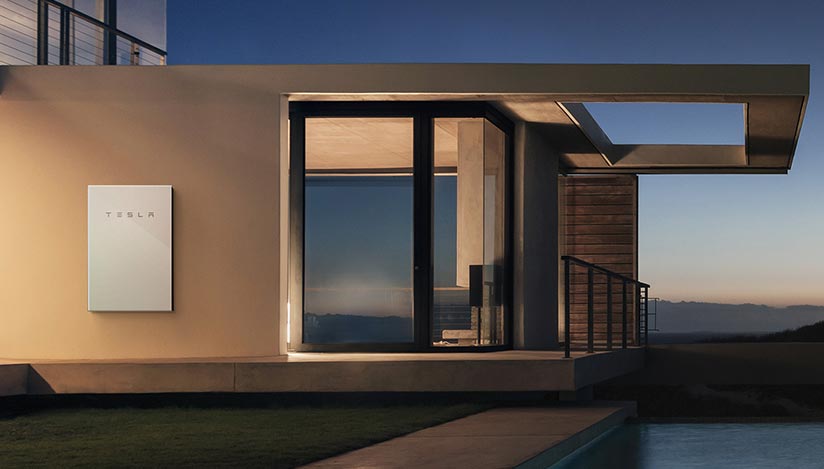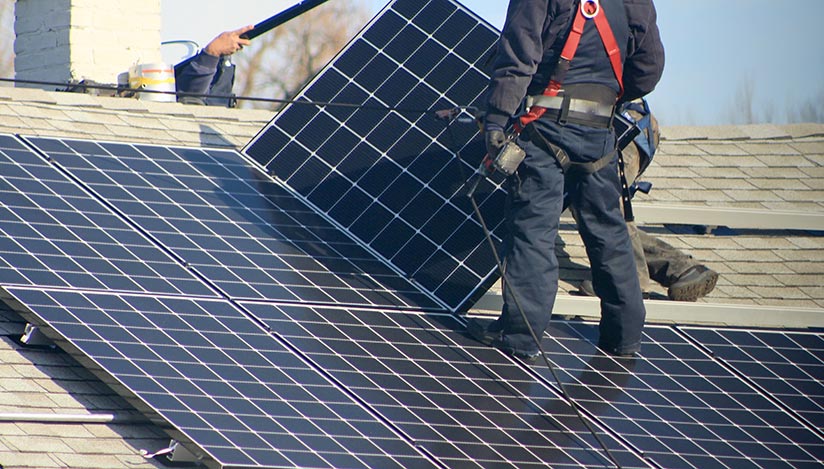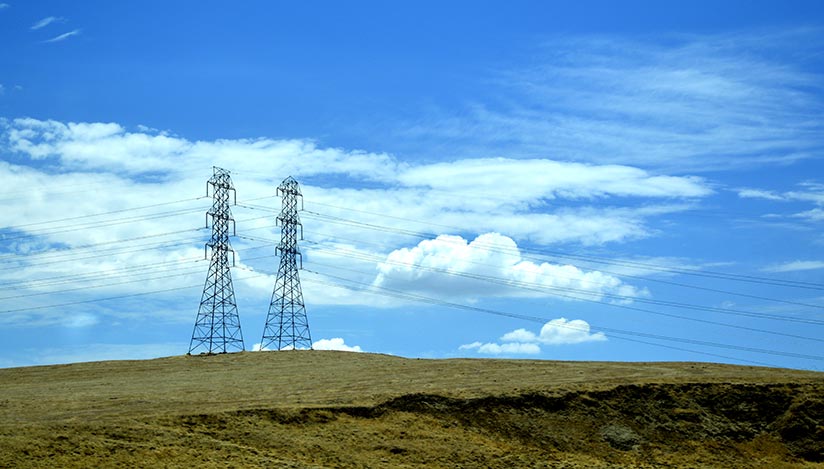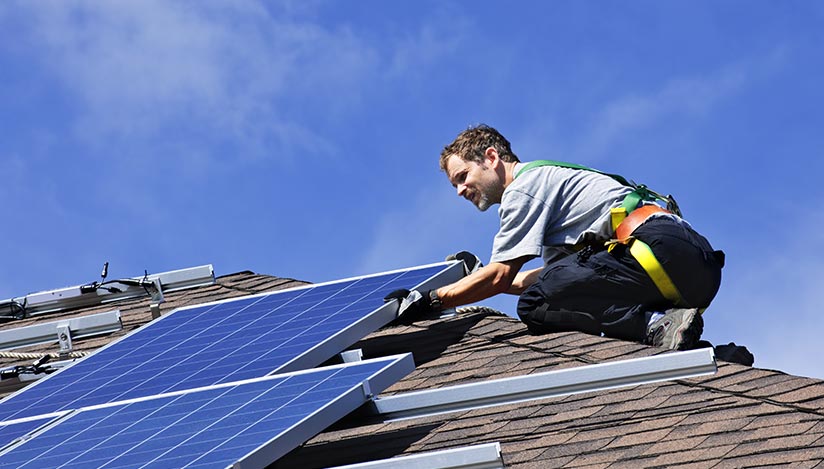
Between 2010 and 2018, prices for high-capacity lithium ion (Li-ion) batteries dropped by 85%. While the overall savings are lessening over time as prices drop, price reductions have by percentage have remained high, averaging about 22% per year over the last 3 years. While these savings aren’t entirely realized by consumers, this has still had a profound impact on the affordability of phones, laptops, and other portable high-tech devices. It’s also meant that that home battery solutions, once only within the financial reach of big businesses and some wealthy individuals, are now affordable for the average homeowner. Consequently, there are now many consumer level home energy storage systems on the market, made by both American and international manufacturers.
Energy storage batteries offer ways for homeowners to further reduce their dependence on the energy grid. And with utility companies like PG&E frequently cutting power to large swaths of California in hopes of preventing wildfires, it is more important than ever for solar system owners to buy storage batteries as part of their emergency preparations. But what makes home batteries useful and cost effective? What do you need to know?
Installing a battery system may help you keep the lights (or fridge or air conditioner) on during PG&E’s Public Safety Power Shutoffs.
Since home batteries came on the scene, the chief motive for homeowners to buy one has been to maximize the savings offered by solar power systems, and reduce the impact of increasingly costly utility rates charged by PG&E. But that’s changing.
PG&E has been increasingly under pressure in the wake of numerous wildfires caused by damaged and faulty electrical transmission equipment. The cost of legal settlements has driven the company into Chapter 11 bankruptcy, and the state of California has compelled the utility to develop a plan for reducing the risk of causing fires.
As most of the fires caused by PG&E equipment have started on high-wind days, PG&E has taken an aggressive approach by enacting public safety power shutoffs. On October 9th, 2019, the utility shut off power to nearly 500,000 customers throughout Central and Northern California, and further shutoffs occurred throughout the month. Southern California Edison has also announced its own plans for potential shutoffs for regions it services.
PG&E’s power shutoff is a response to criticism that the utility has not done enough prevent wildfire ignitions. The devastating Camp Fire, which destroyed the towns of Paradise and Concow in 2018, was sparked after transmission lines failed under high winds. The company had performed smaller-scale power shutoffs in October 2018 due to windstorm conditions, but faced heavy criticism for its handling of the incident. As a result, PG&E was hesitant to shut off power to its Sierra Nevada customers a month later, and this hesitation resulted in the most destructive wildfire in California history.
The devastating consequences of PG&E second-guessing its judgment in November 2018 led the company to broaden its response to severe weather conditions. Under PG&E’s 2019 Public Safety Power Shutdown plan, power lines passing through regions designated by the California Public Utilities Commission (CPUC) as being at elevated (“Tier 2”) or extreme (“Tier 3”) risk for wildfire may be shut off in the event of high wind.

The CPUC’s “High Fire-Threat District Map.” Tier 3 regions are colored red, Tier 2 regions are yellow.
The company has warned that while it’s more likely that customers in these regions will be impacted, any or all of PG&E’s more than 5 million customers could potentially lose power. In particularly wind-prone areas, such as the town of Calistoga—which was impacted by the Wine Country fire of 2017—PG&E has warned of the potential for more than a dozen power outages during California’s 7-month-long fire season.
With Californians facing a potential decade or more of forced power outages, it is more important than ever for homeowners to have an energy backup system.
PG&E CEO William D. Johnson said that these precautionary outages could persist for at least ten years, until the company is able to harden its infrastructure against the extreme weather events that have sparked deadly wildfires. While many have been critical of the company, the reality is that these power shutoffs will be the new normal during California’s increasingly volatile fire seasons.
While a solar power system will allow you to continue delivering power to a refrigerator, freezer, or at-home medical equipment, it will only be able to do so during the few hours when your roof or backyard system receives intense sunlight. But by installing a home battery system, you will be able to run critical appliances during the day, while also charging your home battery, and then run those appliances overnight off the stored battery power.
You will have to be very disciplined—limited lighting, no HVAC or entertainment systems, etc.—but a home battery system can mean the difference between saving or losing hundreds of dollars of food in your home’s or business’s refrigerator and freezer. And for elders who rely on personal oxygen tanks or other electrically powered personal medical equipment, a home battery could potentially save their lives during an extended outage.
But home what battery system is right for your needs?
There are many manufacturers now offering home battery systems, with Sonnen, LG Chem, and Tesla being some of the most notable.
Unsurprisingly, Tesla is the most well-known home battery manufacturer in the market, with their Powerwall battery systems dominating the market. However, we’ve found them to be extremely costly solutions. For even sub-1,000 square foot homes, Tesla recommends a two-battery system, costing nearly $15,000 after installation. For homes of any size with air conditioners and electric vehicles, that recommendation bumps up to a 3-battery system costing more than $21,000.
While there is a lot of public trust in the Tesla brand, from a perspective of maximizing system lifespan, product quality, and cost savings both upfront and in the long run, there are cost-effective alternatives. With these considerations in mind, we’ve found that the best battery systems on the market are those made by LG Chem, a division of LG Electronics, and Sonnen, a German company that exclusively designs and manufactures energy storage systems. These are the battery brands we currently supply to our customers.
Home batteries come in a range of capacities, allowing homeowners to choose one that scales to their energy needs.
For maximum flexibility of budget, home solar batteries are produced in a variety of capacities and energy outputs. The capacity determines how much energy can be stored, while the output (oftentimes referred to as the ‘constant draw’ or ‘nominal power) is the rate at which electricity can delivered by the battery. In other words, capacity is how big of a bucket it is, while output/draw is how fast the bucket can pour.
LG Chem currently produces batteries under the brand name RESU, which stands for ‘residential energy storage unit.’ Standard RESU model batteries are available in capacities of 3.3, 6.5, 7, and 9.8 kWh (though the usable capacity, often referred to as the ‘depth of discharge,’ is about 90 to 95% of the stated capacity). RESU batteries, like most home battery systems, can be chained together for larger total capacity and output.
Sonnen’s line of batteries designed specifically for home solar power owners are marketed under the name sonnenBatterie eco. They range in size from 5 to 15 kWh in 2.5 kWh steps, with the usable capacity being about 90% of the total capacity.
Determining what size battery is right for your home depends not only on how much electricity you use, but how quickly you use it.
If you have visions of running your air conditioning all evening during Sacramento’s hot summers after charging your batteries for a day, you’re going to be disappointed. We’re not quite there yet. To give you an idea of what a home battery can do, the smallest sonnenBatterie eco model (5 kWh) could run your laundry dryer for maybe an hour and a half, or power an energy efficient refrigerator for around 4 days.
Technically, you could run a central air conditioning system for several hours off a very large battery system. Sonnen’s 15 kWh model might power a central AC for perhaps 4 hours, depending on the size. However, you wouldn’t be able to power anything else and achieve that duration. If you’re running the lights in your home, kitchen appliances, and the living room TV, you’ll exhaust the battery long before the evening is through. Then, you’ll be back on expensive on-peak priced electricity. If cooling is critical for you, but you don’t wish to draw electricity from the grid too often, consider purchasing a small portable or window-mounted AC to cool rooms you spend more time in.
The other issue is the rate at which electricity can be produced by a home battery. Sonnen’s batteries offer continuous output of 3 to 8 kilowatts (kW), meaning they can supply power at a rate of 3 to 8 kW per hour (and thus, produce 3 to 8 kilowatt-hours (kWh) in one hour). If you stack batteries for higher maximum output, you may be able to power your house more or less as normal, as long as you don’t fire up multiple high-demand appliances simultaneously.
Be careful to not mixed up by terminology. In the specifications and advertising for a battery, you will often see mention of ‘maximum power,’ ‘peak draw,’ ‘peak power,’ etc. This number is higher than the constant draw of a battery, so it’s sometimes showcased prominently to make a battery sound better. But it just means the maximum amount of electricity that a battery can deliver for a few moments.
This is relevant because some electrical systems, such as an air conditioner, may require a lot of power to start up, and then use less electricity after that. Having a higher peak draw means that a battery can deliver that added boost to help things get going. But after that, a battery can only deliver the amount of electricity listed under ‘nominal output’ or ‘constant draw.’ So, don’t look at the peak draw figure to get a sense of how much stuff a battery can power in your house.
Home batteries give homeowners the ability to engage in “time-of-use arbitrage”—buying energy when it’s cheap, and using stored power and solar power when prices are high.
As we’ve discussed previously, PG&E, SMUD, and other electricity utilities are transitioning customers to “time-of-use” pricing (SMUD uses the term “time-of-day” or “TOD,” but it’s the same thing). Under time-of-use rate plans, you’re charged for electricity changes depending on when you use it. During hours of “peak usage,” which is when people use the most electricity, utility companies charge more for the same amount of electricity than they do during periods when usage is lower.
For instance, let’s take a look at PG&E’s Time-of-Use Peak Pricing 3-8 p.m. (E-TOU-A) rate plan (they also have a 4-9 p.m. version):

What really matters for most PG&E customers are the summertime energy rates, as that’s when electricity usage soars as people turn on their air conditioners. During the summer, between peak usage hours of 3 p.m. to 8 p.m., electricity costs 40.4 cents per kilowatt-hour (kWh). At night and through the next day, during off-peak hours, the price drops to 32.9 cents per kWh. PG&E’s off-peak rates are already very high (higher even than SMUD’s on-peak rate of 28.35 cents). With such high rates during the afternoon and early evening, cooking dinner or watching TV in the evenings costs families a small fortune.
That’s where time-of-use arbitrage comes in (arbitrage is just a fancy word meaning to buy something when it’s cheap, and then selling it at another time or in another place for more money). People with home battery systems can charge up their batteries at night when electricity is cheap, and use the charged battery when prices are higher. Even if this doesn’t cover all your energy usage, you can at least offset some of the costs.
Solar power users have it even better. They can charge a battery from their solar power system at any time at no cost. When it’s topped out, they can divert energy produced by their panels to the electrical grid to earn a credit from their utility (thanks to an agreement called “net energy metering”). Then they can use the electricity stored in their battery during pricey evening hours, and when that’s exhausted, use the energy credits they have earned to offset any additional electricity they need to draw from the grid.
In short, a battery system allows homeowners to increase the savings afforded them by their solar power system, while preparing them for public safety power shutoffs.
With all that in mind, how big of a home battery do you need?
According to the U.S. Energy Information Administration, the average electricity consumption of a California home was 547 kWh per month, or about 18 kWh per day. Obviously, this varies according to location and personal habits. You want to refer to your energy bill to see how much energy you use.
Based upon your habits, it might be reasonable to estimate that about half of your family’s energy usage occurs during high-demand evening hours. If you want to cover most or all your evening consumption, you may want to invest in a battery with a capacity of 10 kWh or more if it’s financially feasible. A larger battery might be necessary if you have medical equipment that must stay powered overnight, and you will want to buy a system that takes this need into account.
Currently, it’s not practical to purchase a battery system that will meet all your energy needs. However, you can put a big dent in your evening energy consumption and your energy bills as well. If you want to learn more about how a home battery is the perfect cost-saving complement to a solar power system, contact Capital City Solar by calling (916) 782-3333, or send us a message using our contact form.







